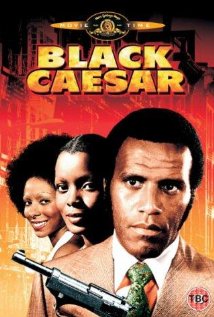When Edward G. Robinson filed “Little Caesar” in 1933, he could never have imagined that fifty-two years later it would be reconfigured as Blaxploitation and become a cult classic in its own right. Williamson stars as a former shoeshine boy who strives to get ahead by shoehorning his way into the formerly all-white organized crime ring. He bullies one of the figureheads into giving him a chance and then uses that chance to springboard into a leadership position of his own, always stomping out anyone in his way and always with an eye on paying back the dirty cop (Lund) who mistreated him as a youth and gave him a limp with which to remember him by. He reaches unheard of heights financially, but, like so many before him, loses the most important things like the respect of his friends and the love of his woman (Hendry.) Williamson has quite a presence as the title character, his tall, athletic build cutting an imposing figure while his sly and slick personality covers the business end of things nicely. Hendry runs hot and cold. Her quieter moments are solid, but anytime she’s called upon for heated emotion it all goes way over the top and is histrionic in the extreme. Lund is an exceedingly effective villain. His ruddy face is just begging to be pummeled as he expels nasty remarks and racial epithets. Martin and Roye play Williamson’s childhood buddies who aid him as an adult and Harris and Gentry appear as his estranged parents. Wellman, a long way from “Lafayette Escadrille”, plays Williamson’s shady attorney while former Miss USA Hansen plays his curvy wife. It’s a rough and tumble, at times heavily violent, film with lots of politically incorrect language and a dollop or two of brief nudity, which is all to be expected in this genre. What makes it fascinating, despite its obviously low budget, is the filming technique of director Cohen who shot the film in mostly authentic locations with no permits or intensive planning. Thus, when chases occur in the streets or a character wanders bloodily past onlookers, the reactions of the crowd are real! The film is set in various times from the 50’s to the 60’s, but there isn’t a shred of period detail to be found anywhere. There’s also some mighty choppy editing at times with scenes lasting mere moments or seemingly coming out of nowhere. It winds up mattering little, however, with all the audacious goings-on. Fans of the genre ought to really enjoy this one, which takes little time to breathe in between shootings, maimings, fisticuffs, chases and any other form of action. There’s a great score as well with songs provided by no less than James Brown. Despite the downbeat ending, a sequel was in theaters within a year’s time called “Hell Up in Harlem”.
Foundational Cinema
Copyright © 2025 The B Movie Nation

